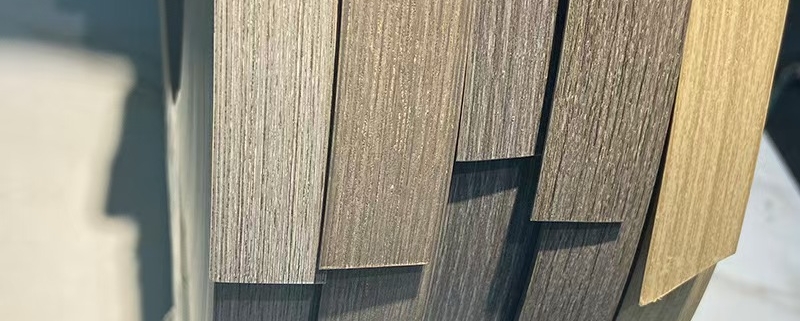How Durable of PVC Edge Banding?
How Durable of PVC Edge Banding?
PVC edge banding has the best water and chemical resistance compared to other types of edge banding materials (such as ABS, wooden edge banding, etc.).
The reasons why it has such water and chemical resistance are as follows:
PVC structure
- Polyvinyl chloride molecule: PVC is a polymer material formed by the polymerization of vinyl chloride monomer (Vinyl Chloride Monomer). It is tightly bound to chlorine atoms and carbon atoms, and the chemical bonds formed are relatively strong and stable, which makes the PVC edge sealing film not easy to react with external chemicals (including water).
- Low polarity: The molecular structure of PVC is relatively non-polar, and the force between non-polar molecules is relatively weak, which is not very able to support complex chemical reactions. Therefore, it is not easy to react chemically with polar chemicals (such as water, acid, and alkali), so it can resist chemical erosion very well.
ABS structure
Acrylonitrile-butadiene-styrene copolymer: a thermoplastic polymer made of acrylonitrile, butadiene, and styrene. This combination makes it inferior to PVC edge sealing film in chemical resistance for the following reasons:
- Double bonds: The structure of ABS contains double bonds, which are active sites for chemical reactions. They easily react with oxygen or other oxidants, making the material easy to oxidize, not durable, and not resistant to chemicals. At the same time, double bonds are also easy to participate in other addition reactions, which may cause chain breakage or cross-linking, thereby reducing the mechanical properties of the material.
- High polarity of acrylonitrile: Its high polarity is sensitive to certain polar solvents (such as ketones and esters). These solvents can penetrate ABS, destroy the interaction between its molecules, and easily cause the material to swell and soften.
- Non-polarity of styrene: Its non-polarity is sensitive to certain non-polar solvents (such as aromatic solvents), and it is easily softened by these solvents, affecting the mechanical properties and hardness of the material.
Protection of PVC additives
Plasticizers
Plasticizers are mainly used to improve the softness and plasticity of polymers and enhance the elasticity and flexibility of materials, which makes it easier for PVC edge banding to fit on complex surfaces and better resist impact. Its principle is as follows:
- Lowering the glass transition temperature (Tg): Each polymer has a specific temperature called the glass transition temperature. Below this temperature, the polymer becomes hard and brittle, and above this temperature, it becomes soft and elastic. Plasticizers can increase the distance between molecular chains by inserting between PVC molecular chains, which can reduce the force between molecules, thereby reducing the glass transition temperature of PVC and making the material elastic and flexible.
- Increasing the mobility of molecular chains: Plasticizer molecules are embedded between PVC molecular chains, which is equivalent to the effect of a lubricant, which can reduce the friction between chains and increase the mobility of polymer chains. This can improve the plasticity and stretchability of PVC film.
- Improving compatibility and processability: Plasticizers have good compatibility, which allows plasticizers to be evenly dispersed in the PVC matrix, effectively improving the performance of the overall material.
Stabilizers
Stabilizers can protect PVC film from being decomposed by UV rays and high temperatures under high temperatures and ultraviolet rays. Its principle is as follows:
- Inhibit dehydrogenation and chlorination reactions: PVC is prone to dehydrogenation and chlorination reactions under high-temperature conditions, causing chlorine atoms to fall off the PVC molecular chain, further causing chain breakage and material degradation. Stabilizers (such as metal soaps, organic tin, etc.) can react with the detached chlorine atoms to form stable compounds, which can effectively prevent chain breakage and material degradation.
- Absorb heat energy: Some stabilizers can absorb heat and reduce the impact of heat energy on materials.
- Absorb UV radiation: UV stabilizers can absorb UV radiation and convert it into lower-energy heat energy, thereby protecting PVC materials from chemical chain breakage and color fading caused by UV.
- Neutralize free radicals: UV exposure will produce free radicals, which will attack the molecular chain of PVC, resulting in a decrease in material performance. Light-resistant stabilizers such as HALS can neutralize these free radicals and convert them into stable compounds through chemical reactions, thereby inhibiting the degradation process of the material.




